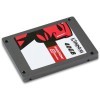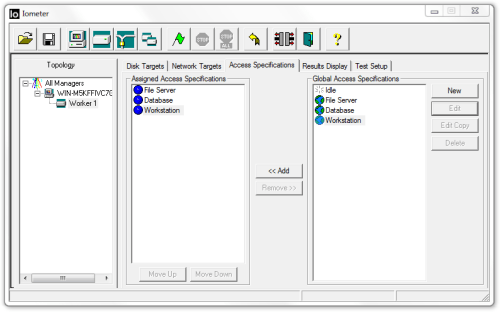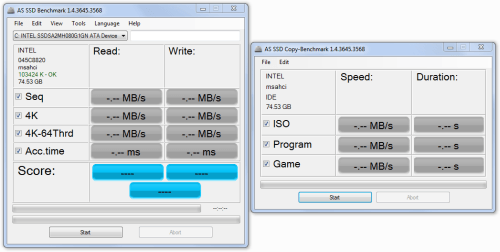- Qualcomm Launches Snapdragon 4 Gen 2 Mobile Platform
- AMD Launches Ryzen PRO 7000 Series Mobile & Desktop Platform
- Intel Launches Sleek Single-Slot Arc Pro A60 Workstation Graphics Card
- NVIDIA Announces Latest Ada Lovelace Additions: GeForce RTX 4060 Ti & RTX 4060
- Maxon Redshift With AMD Radeon GPU Rendering Support Now Available
Kingston SSDNow V Series 40GB

Want to make the upgrade to a solid-state drive, but prefer to avoid the high cost of adoption? Kingston helps ease that pain with its SSDNow V Series 40GB, a modest drive that features Intel’s NAND and impressive G2 firmware, which helps it deliver stellar performance when compared to an HDD, for an easy-to-stomach price.
Page 4 – Synthetic: Iometer & AS SSD
Iometer 2006.07.27
Originally developed by Intel, and since given to the open-source community, Iometer (pronounced “eyeawmeter”, like thermometer) is one of the best storage-testing applications available, for a couple of reasons. The first, and primary, is that it’s completely customizable, and if you have a specific workload you need to hit a drive with, you can easily accomplish it here. Also, the program delivers results in IOPS (input/output operations per second), a common metric used in enterprise and server environments.
The level of customization cannot be understated. Aside from choosing the obvious figures, like chunk sizes, you can choose the percentage of the time that each respective chunk size will be used in a given test. You can also alter the percentages for read and write, and also how often either the reads or writes will be random (as opposed to sequential). I’m just touching the surface here, but what’s most important is that we’re able to deliver a consistent test on all of our drives, which increases the accuracy in our results.
Because of the level of control Iometer offers, we’ve created profiles for three of the most popular workloads out there: Database, File Server and Workstation. Database uses chunk sizes of 8KB, with 67% read, along with 100% random coverage. File Server is the more robust of the group, as it features chunk sizes ranging from 512B to 64KB, in varying levels of access, but again with 100% random coverage. Lastly, Workstation focuses on 8KB chunks with 80% read and 80% random coverage.
Because these profiles aren’t easily found on the Web, with the same being said about the exact structure of each, we’re hosting the software here for those who want to benchmark their own drives with the exact same profiles we use. That ZIP archive (~3.5MB) includes the application and the three profiles in an .icf file.



Ironically, despite Iometer being created before SSDs even were around, the nature of these tests are going to inherently favor sold-state drives due to their rapid, near instantaneous access times. Scenarios such as these are pretty much the bane of hard drives and illustrate why 15,000RPM SCSI drives exist. The large number of tiny, mostly random read and random write file operations will also be the anathema of any SSD controller that was designed primarily for large sequential read & write performance. Unfortunately the Summit happens to use one of those very controllers, although in its defense this is because Samsung chose to optimize their controllers for large sequential writes.
AS SSD





Intel’s second-gen SSD controllers are currently the best available for handling numerous random 4KB file operations, and despite losing half of the flash channels with half the capacity the Kingston drive has no trouble staying just ahead of its predecessor in the X25-M Gen 1.
Support our efforts! With ad revenue at an all-time low for written websites, we're relying more than ever on reader support to help us continue putting so much effort into this type of content. You can support us by becoming a Patron, or by using our Amazon shopping affiliate links listed through our articles. Thanks for your support!






